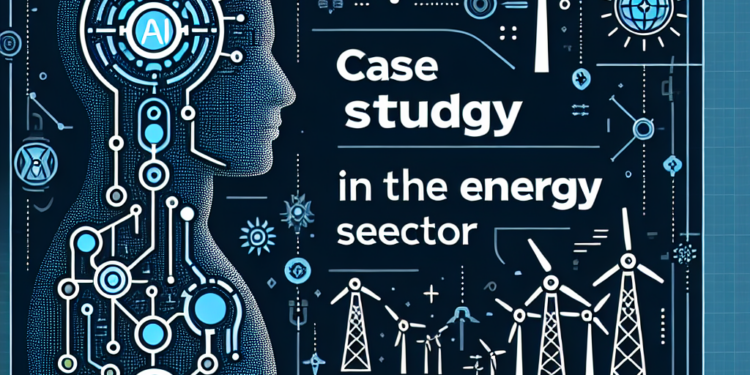In recent years, the energy sector has seen a significant increase in the use of artificial intelligence (AI) to improve efficiency, reduce costs, and increase productivity. AI has the potential to revolutionize the way energy is produced, distributed, and consumed, leading to a more sustainable and environmentally friendly industry. In this case study, we will explore some of the ways AI is being used in the energy sector and the benefits it can bring.
One of the key areas where AI is being used in the energy sector is in predictive maintenance. By analyzing data from sensors and other sources, AI algorithms can predict when equipment is likely to fail and alert maintenance teams in advance. This allows for proactive maintenance, reducing downtime and preventing costly repairs. For example, a wind farm may use AI to monitor the condition of its turbines and schedule maintenance based on the likelihood of failure, instead of waiting for a breakdown to occur.
Another important application of AI in the energy sector is in energy demand forecasting. By analyzing historical data, weather patterns, and other factors, AI algorithms can predict how much energy will be needed at different times of the day or year. This allows energy providers to optimize their operations, reduce waste, and ensure a reliable energy supply. For instance, a utility company may use AI to predict peak demand times and adjust its energy production accordingly, avoiding shortages or surpluses.
AI is also being used to optimize energy distribution. By analyzing data from smart meters, sensors, and other sources, AI algorithms can identify inefficiencies in the energy grid and suggest improvements. For example, AI can help utilities identify areas of the grid that are prone to blackouts or outages and prioritize upgrades and maintenance. By optimizing energy distribution, AI can help reduce costs, improve reliability, and increase customer satisfaction.
Another important application of AI in the energy sector is in energy trading. By analyzing market data, weather patterns, and other factors, AI algorithms can predict energy prices and recommend trading strategies. This allows energy companies to maximize their profits and reduce risks. For example, a renewable energy provider may use AI to predict when prices will be highest and sell its energy at those times, increasing its revenue.
AI can also help optimize energy production. By analyzing data from sensors, weather forecasts, and other sources, AI algorithms can optimize the operation of power plants and renewable energy sources. For example, a solar farm may use AI to adjust the angle of its panels to maximize energy production based on the position of the sun. By optimizing energy production, AI can help reduce costs, increase efficiency, and maximize the use of renewable energy sources.
In addition to these applications, AI is also being used in the energy sector to improve safety and security. By analyzing data from cameras, sensors, and other sources, AI algorithms can detect anomalies and alert security teams to potential threats. For example, a power plant may use AI to monitor its perimeter and identify unauthorized intruders or suspicious activities. By improving safety and security, AI can help prevent accidents, reduce risks, and protect critical infrastructure.
Overall, AI has the potential to revolutionize the energy sector by improving efficiency, reducing costs, and increasing productivity. By using AI in predictive maintenance, energy demand forecasting, energy distribution, energy trading, energy production, and safety and security, energy companies can optimize their operations and deliver reliable and sustainable energy to customers. As AI technology continues to advance, we can expect to see even more innovative applications in the energy sector, leading to a more efficient and environmentally friendly industry.













